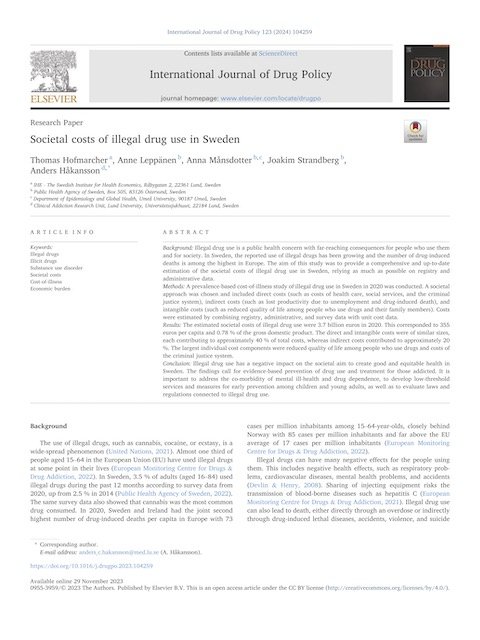By Albin Stenström, Felipe Estrada, Henrik Tham
Drug use was criminalized in Sweden in 1988 with the aim of reducing the number of consumers and drug-related risks and harms. Imprisonment was introduced into the penalty scale in 1993 to improve the legislation’s effectiveness. The criminalization has never been evaluated. Method: Goal-attainment evaluation based on a range of indicators from surveys, case-finding estimates, healthcare and cause-of-death data, and crime statistics. Comparative drug policy analysis is conducted with other Nordic countries. Results: The criminalization is not followed by a reduced or more expensive drug supply, reduced consumption levels, problematic drug use or healthcare needs, or fewer drug-related deaths. Most of the indicators instead show the opposite. Control costs are high, and trends are no better than those of other Nordic countries, despite Sweden’s more repressive drug policy. Conclusion: Criminalization emerges as an ineffective, expensive, and harmful means of dealing with the drug problem.
International Journal of Drug Policy Volume 133, November 2024, 104573






